All fish are predators, but northern pike come dressed for the part—needle teeth, vacant eyes, thick slime, serpentine shape—which is part of what make pike fishing so much fun. Their primeval morphology has changed little in 60 million years. Pike belong to the northern wilderness, where they remain most common. But stocking has extended their range south. If your state has predictable ice cover, chances are you have a northern pike lake nearby.
May is definitely the best time to go pike fishing in the northern United States and southern Canada. Recuperated from spawning, they prowl the shallows for panfish and baitfish. With little yet in the way of weed growth, the northerns don’t have all that many ambushing spots. They haven’t seen a lure in months. In short, spring pike fishing is as good as it gets—but it’s not the only time to go. These tips should make pike fishing for beginners a lot easier.
Table of Contents
Where to Fish for Pike
Tackle Recommendations for Pike Fishing
How to Fish for Pike with Bait
Best Lures for Pike Fishing
How to Fish for Pike with a Fly Rod
How to Handle Pike
How to Clean a Northern Pike
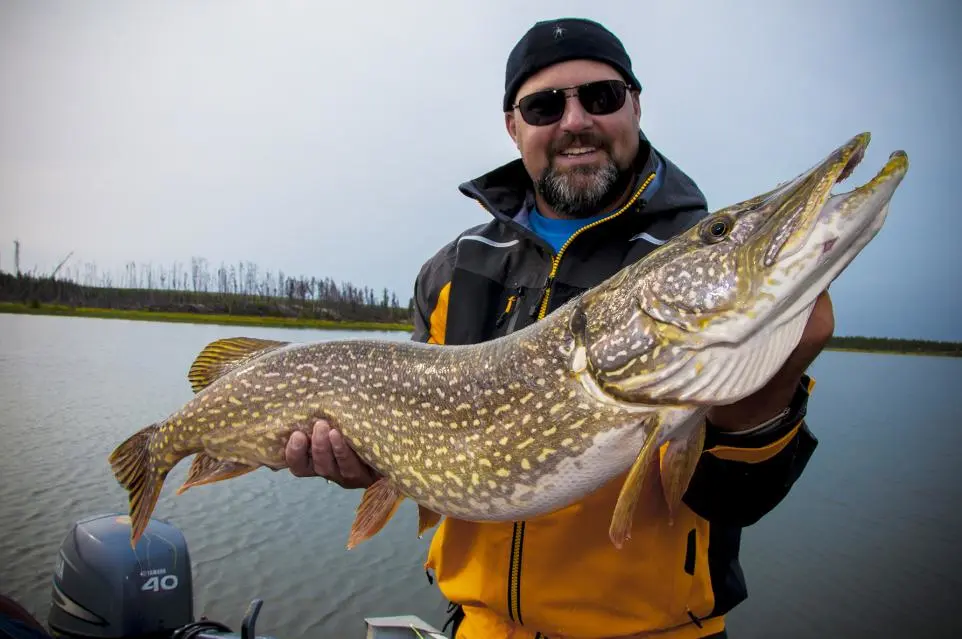
Ben Romans shows off a nice Saskatchewan pike. Joe Cermele
Where to Fish for Pike
Nearly all states in the northern tier of the country have lakes where you can catch pike. In New England, Vermont has the best pike fishing of the whole region. With its Great Lake border, NewYork is an excellent pike state, as are Michigan, Minnesota, and Wisconsin. The Dakotas and Colorado have good pike fishing in reservoirs, and Alaska has some fine pike fishing. The wilderness waters in the Canadian provinces have the least fishing pressure—and the biggest pike.
Pike Fishing Tips in a Lake Bay
Mouths of swampy inlets make good starting points, but you’ll probably catch more pike in the flats just offshore. Find one where the depth is 3 to 10 feet. Pike might have traveled up the inlet to spawn and will now be drifting out into the bay. These flats serve as staging spots for spawning panfish or baitfish, or gathering spots for any trout (or juvenile salmon or steelhead)that may swim down following an upstream stocking. Like the local Elks Club at a barbecue, pike may not have the schedule down, but they know where the food is.
Ice-out pike gravitate to secondary coves, areas that warm before the main bay. In fact, pike might have spawned in the marshy shallows or flooded timber at the edges of such spots. Fish the flats at the mouths of these coves within-line spinners.
Prominent shoreline structures—beaver dams, flooded timbers, downed trees—always deserve at least a few casts. Work your way in, combing the flats in front with an in-line spinner. This is a good spot for lunch; cast out a bobber and minnow while you’re eating a sandwich.
As the spring sun warms the bay, weeds grow and pike orient to cover near drop-offs. Weedy points make particularly good fishing spots, as do mid-bay weed shoals. Search adjacent waters with an in-line spinner, flutter-retrieve a spoon, or stop and start a spinnerbait along the edges of the weeds. If the water is calm, try your topwater lures.
Deeper weedlines with access to deep water are the last spots on the spring tour. Find the 6- to 10-foot break. In general, pike over 10 pounds are the first to vacate the shallows for cooler water. This edge is the spot to try ajig and worm, or perhaps to flutter-retrieve a spoon.
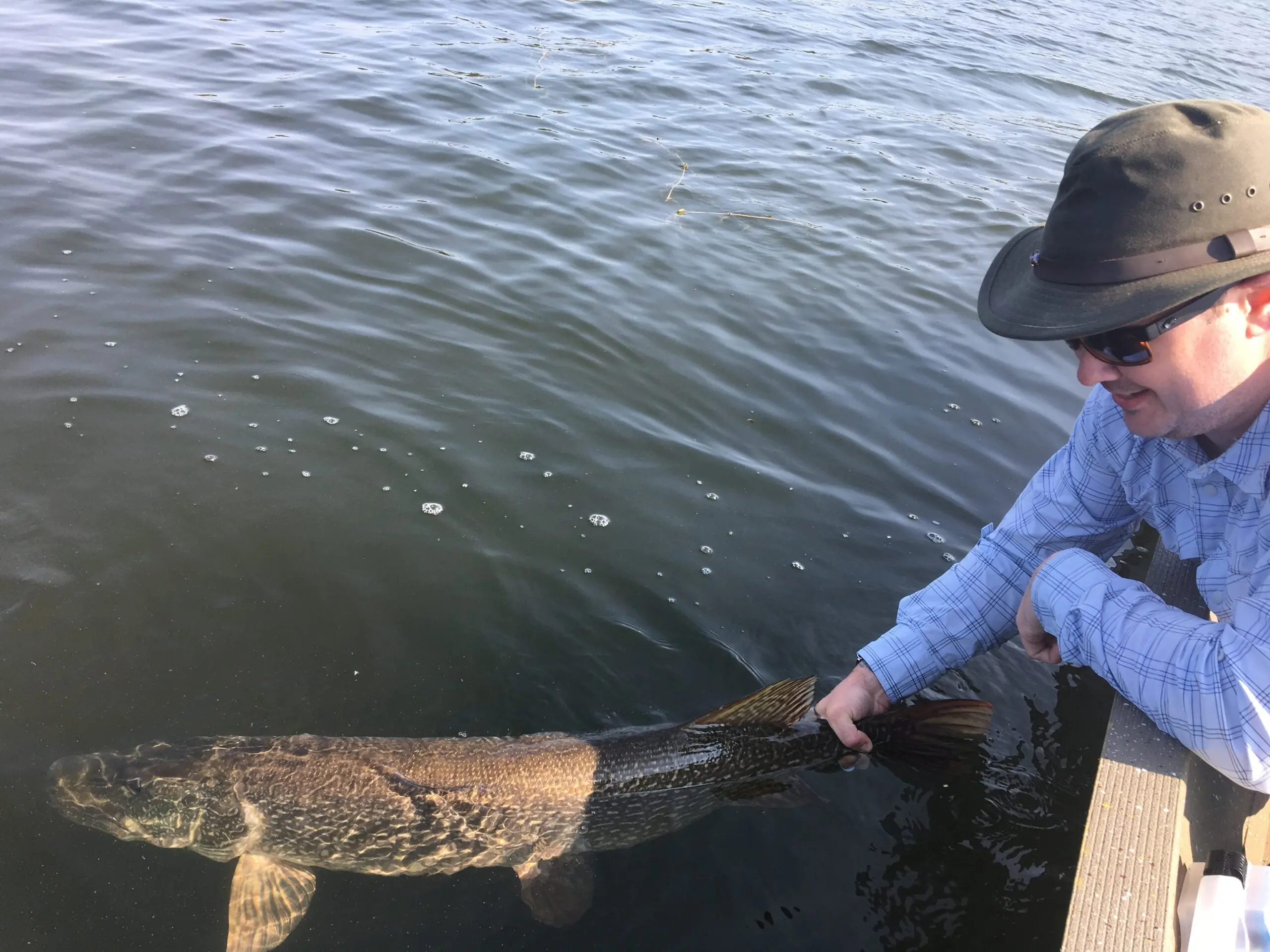
Colin Kearns releases a trophy pike. Colin Kearns
Tackle Recommendations for Pike Fishing
Wilderness northerns—pike that you fly to—are bigger than fish that you drive to, and this distinction is what you should base your tackle decisions upon. For the wilderness northerns—which means fish that weigh 10 to 20 pounds (and occasionally more)—choose spinning outfits that handle 14- to 20-pound-test or medium-heavy baitcasting outfits in 17- to 20-pound test.
To catch the latter, 5- to 10-pound northerns, you have to convince a nervous 30-incher that the plug sputtering across the surface really is a wounded perch. Use your bass tackle: 6- to 10-pound-test spinning gear or light or medium baitcasting outfits in 12- to 14-pound-test.
How to Fish for Pike with Bait
Some anglers believe that “nervous” baitfish such as shiners are better than chubs and suckers as pike baits, but the minnow’s accessibility to fish is more important than its species. That’s why proper rigging is key. Here is a rundown of the best bait rigs for pike fishing.
How to Catch Pike on a Bobber Rig
When you’re fishing near a prominent obstruction, around the mouth of a tributary, or over weeds, using a bobber is a good approach (you want it as small as possible to minimize the resistance when a pike takes the bait and runs). Rig a bait in the 6- to 12-inch range on a size 1/0 hook, with a snelled wire leader attached to a snap-swivel. Position the float so that it holds the bait, hooked lightly through the back, a foot or two above the weeds. Give the pike a couple of minutes to turn the bait around in its mouth before you set the hook.
Fishing for Pike with a Drift Rig
Cover long sections of definable structures such as weed edges, drop-offs, or shorelines. A 6-inch minnow hooked through the lips with a size 1 hook is about right. Match the sinker weight to the speed of the drift and the depth, starting with a single light split shot and adding until you hit bottom—or fish. When you get a bite, drop the rod tip, open the bail, give a 10 count, reel in slack, and set the hook. You may need to allow extra time with bigger baits, but if you wait too long, the fish will either swallow the hook or feel the sinker catch in the grass as it runs and will drop the bait.
How to Fish for Northern Pike with a Jig and Minnow
Hook a 4-inch minnow through the head, from the bottom to the top. Use a full(2- to 3-foot) but slow jigging motion and be ready for a strike on the fall. When a fish hits, drop the rod tip for a moment, then set the hook hard.Jig-heads in the ¼- to ½-ounce range seem to provide the best minnow action, but it’s more important to adjust for the depth and speed of the drift.
Best Lures for Pike Fishing
White, yellow, and chartreuse are great lure colors when pike fishing—probably because they resemble the belly of a struggling food fish. You’ll want an assortment of the following pike baits below in those colors.
Inline Spinner
In early spring, before weed growth becomes a factor, focus on covering water.The bigger spinners are a top choice here because the weight lets you cast them farther and the blades throw more flash. Retrieve the spinner steadily, just fast enough to keep it off the bottom. Think Rooster Tail, Mepps, and Blue Fox spinners in 1/6- to 1-ounce sizes.
Spoon
Start by steadily and slowly reeling, just fast enough to keep the spoon wobbling. If that doesn’t produce, try a “flutter retrieve,” accomplished by imparting a jigging motion as you reel. Spoons are particularly effective along drop offs because you can precisely control the depth. Try Dardevles, Little Cleos, Thomas Buoyants, and Johnson Silver Minnows weighing ¼ to 1 ounce.
Minnow-Imitating Plug
When pike fishing with this lure style, begin with a steady retrieve. If that doesn’t work, try stop-and-start reeling. Early in the season, use a shallow runner. As waters warm up, go to a crank bai tor a soft-plastic swimbait that runs in the 10-foot range. You’ve got plenty to choose from here: the Rapala Original or Shad Rap, Rebel Minnow, Rattlin’ Rogue, C.C. Shad, Bomber Model A, Mann’s 1-Minus, and the Storm Wild-Eye SwimShad.
Spinnerbait
Draw a spinnerbait past sprouting weeds and stop the retrieve for a three count just as the bait approaches a possible hideout. Add a twist-tail or rubber-worm trailer for action and color contrast. Models abound. If I had to use only one pike lure, it would be a white spinnerbait with a trailer. If the water is a tall off-color, try a bait with a chartreuse skirt.
Jig and Worm
As the temperature in the shallows reaches 60 degrees, pike begin to set up shop along 6- to 10-foot drop-offs. These are best fished with a jig in full, 2-to 3-foot hops. Pike often take the jig as it drops; the strike may feel like a nibble or a perch bite. It’s not. Use bucktail and marabou jigs in the ¼- to1-ounce range.
Surface Plug
In late spring, fish topwater lures
over weed beds in the calm water of morning or late afternoon. Over the years the combination of a slim minnow shape and propeller fuss has been most productive for me. Tie on a large (4½- to 6-inch) Jitterbug, Heddon’s Crazy Crawler or Dying Flutter, Storm Chug Bug, Smithwick Devil’s Horse, Sputterbuzz, or Zara Spook.
How to Fish for Pike with a Fly Rod
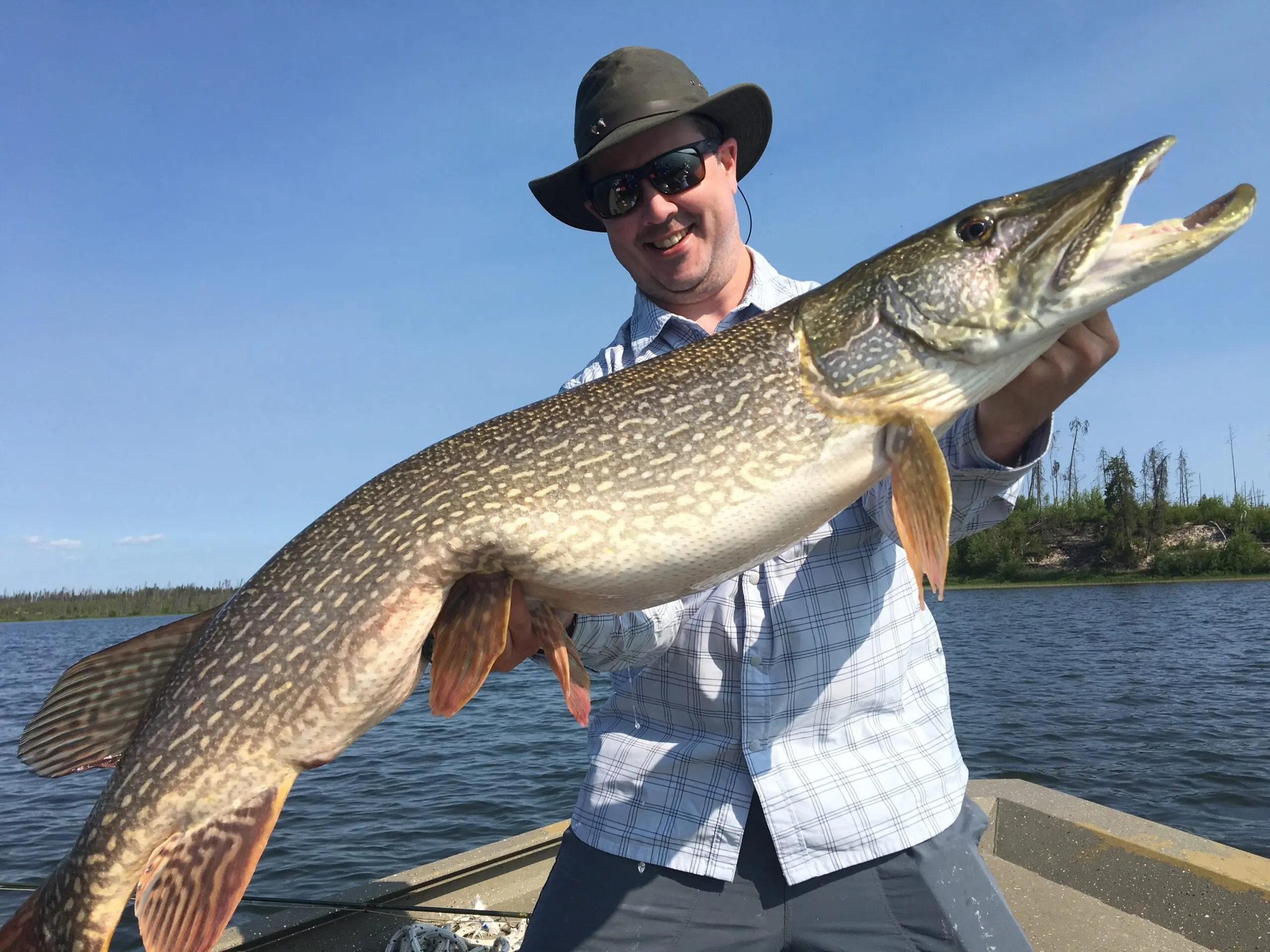
Trophy pike like this one are a fly angler’s dream. Colin Kearns
Northern pike make outstanding fly rod targets. They’re eager to eat a wide variety of flies, and even if your fly-fishing skills are minimal, it doesn’t take years of experience to be successful. If you’re fishing an area with an abundance of large pike—north of 40 inches—opt for a 9-weight fly rod and reel. If you’re fishing an area loaded with small- to medium-size pike, a 7-weight rod and reel is perfect. Although you can get away with a full-floating fly line most of the time, many pike fly anglers opt for a slow-sinking line with a clear tip
. This helps bulky flies get below the surface faster, but doesn’t cause them to sink so fast that they can’t be worked just over top of the weed beds pike frequent.
All you need to build a leader is a length of 40- or 50-pound fluorocarbon, a length of 20- or 30-pound fluorocarbon, and a bit of tie-able bite wire to stop the pike from cutting the leader. Above, you’ll find a quick tutorial video
on how to put it all together. You want your overall leader length to fall between 4 and 7 feet for maximum ability to make the fly swim and to ensure a solid hook set when a pike bites.
The Best Flies for Pike Fishing
Though pike will readily attack surface flies like poppers
, 4- to 8-inch subsurface streamer patterns that imitate baitfish typically draw strikes more consistently, especially during months when the water is cooler. Patterns like the Whistler
, Tsunami
, and classic Deceiver
are all excellent choices for northerns. Just make sure you have plenty on hand, as their teeth are highly adept at shredding hair and feathers.
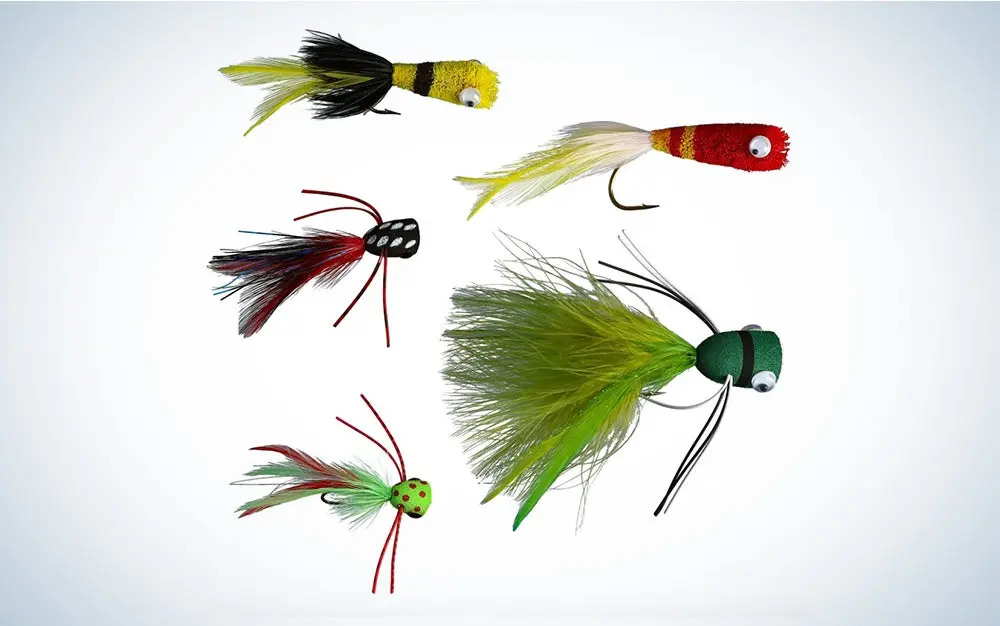
How to Strip-Set a Pike on the Fly
Given the flat shape of a pike’s mouth and their bony jaws, a low-angle strip strike is imperative when fly fishing. After the cast, put the rod tip just above the surface of the water or even under the water an inch or two. Work the streamer is short, firm strips, pausing often. Pike often hammer a fly during a pause, or immediately upon the fly moving again. When the fly gets eaten, resist the urge to lift the rod into the air when striking. Instead, maintain that low rod angle and strip the running line towards you with some force. This will help plant the hook firmly, and once it’s set you can raise the rod and fight the pike to the net.
How to Handle Pike
As tempting as it might be, don’t copy Jimmy Houston and offer a pike any public display of affection, not even a quick peck. Some 10 years ago, an overjoyed Russian ice fisherman did just that, and the pike clamped onto his nose and had to be “surgically removed” at the local hospital.
Pike won’t just bite line, so watch your fingers when you’re handling them. If you catch a small northern pike that is under 10 pounds, you can grip it across the back of the head, behind the eye, or over the back of the gill plate. Bigger pike should be netted and subdued with a firm grip while in the net. Needle-nose pliers are a must; jaw spreaders can come in handy. Pinch down the barbs of your lures to expedite extractions.
Read Next: An Adventure to the Best Pike Fishing River in North America
How to Clean a Northern Pike
Walleyes, crappies, perch, and catfish get all the love when it comes to freshwater fish anglers are excited to eat, but the truth is that northern pike are equally delicious. They’re a staple at shore lunches in the Canadian North Woods, and despite the pungent aroma of pike slime, their meat is white, mild, sweet, and flaky, especially when caught in cold water through the ice or in early spring and fall. The real reason that they don’t get as much culinary love, however, is that filleting a pike is a bit trickier than filleting most other fish.
Pike have a series of Y-shaped bones that run down the length of their bodies in addition to their rib cages. Because of these bones, you can’t simply fillet a pike like any other fish and expect bone-free pieces of meat. Though there are several methods for filleting a pike, the easiest is a two-part process.
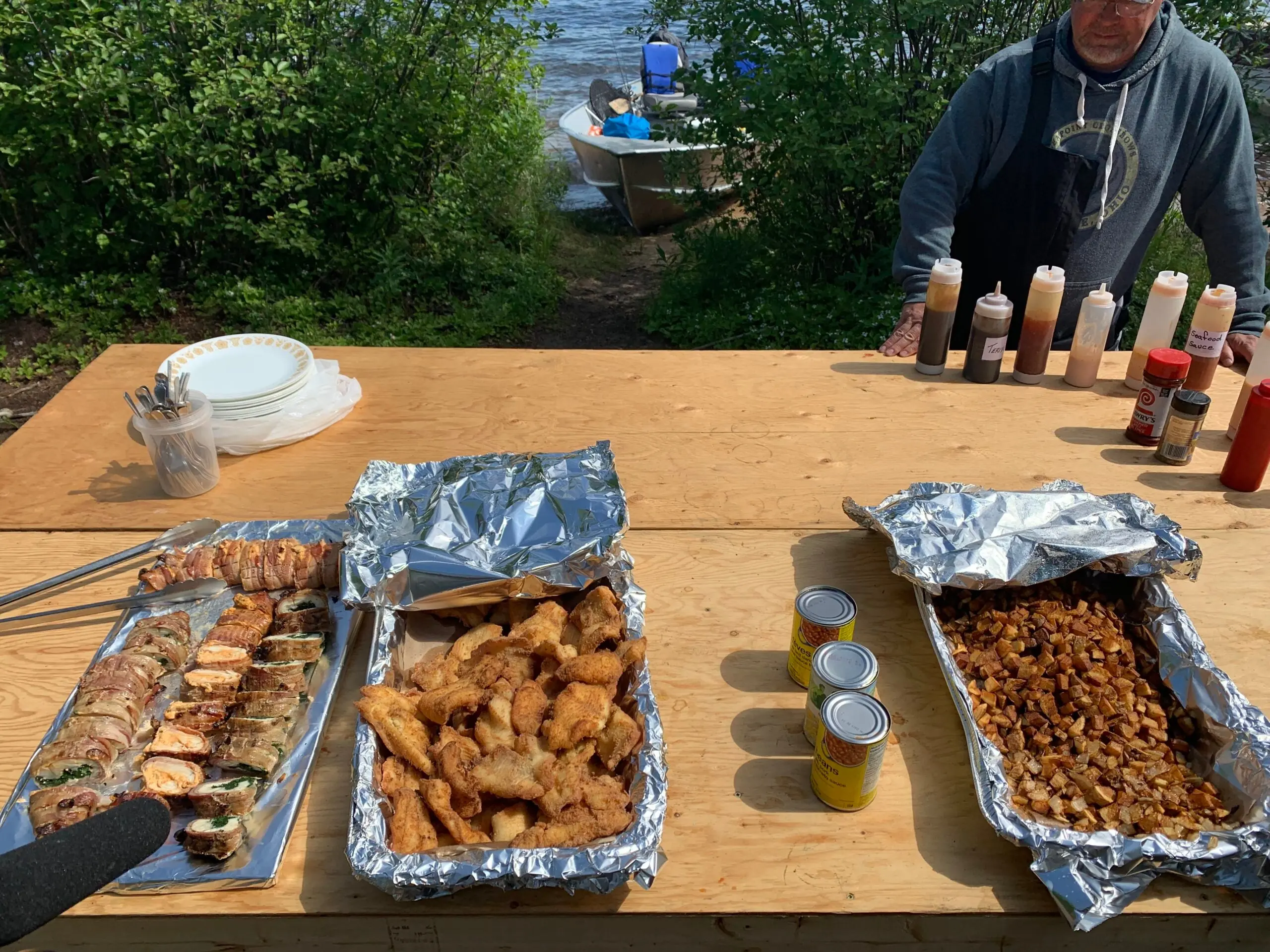
No pike fishing trip is complete without a shore lunch. Colin Kearns
To start, simply fillet the pike as you would any other fish, cutting right through those pesky Y bones. Once each fillet is removed, skin the fillets to prepare them for Y bone removal. You’ll see the tips of these bones poking out of the thickest part of the fillet, the trick is to gently run the edge of your knife along the points until you feel the blade contact the stem of each Y bone. Don’t cut through these stems, a they’ll act as a guide to follow with the knife.
Next, begin making shallow slices toward the thick top of the fillet following the curve of the Y bones just as you’d follow the spine when filleting any other fish. You are essentially filleting the fillet a second time, but once you finish, you’ll have a completely bone-free top loin section of pike meat. Set that aside and make another shallow slice along the opposite side of the Y bone tips remaining in the other half of the fillet. This time you’ll be following the back side of the Y bones, ultimately removing them all in one long strip. Done properly, you’ll end up with two nice pieces of boneless meat with very little loss.
![Field & Stream [dev]](https://images.ctfassets.net/fbkgl98xrr9f/1GnddAVcyeew2hQvUmrFpw/e4ca91baa53a1ecd66f76b1ef472932b/mob-logo.svg)


